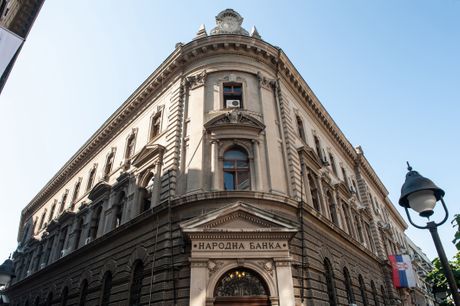Serbian central bank makes new decision about key interest rate

The National Bank of Serbia (NBS) Executive Board decided today to keep the key policy rate at 5.75%, as well as the rates on deposit and lending facilities – at 4.5% and 7.0%.
We carry a statement issued by the central bank in full:
"In making the decision, the Board highlighted that the key policy rate has been cut by 75 basis points in total since June and that the effects of past monetary policy easing will play out in the coming period as well. As underscored by the Board, although inflation has returned within the target tolerance band and continues to move therein, a cautious monetary policy stance is necessary given the uncertainty in the international environment, notably heightened geopolitical tensions and their potential impact on macroeconomic developments.
Monetary policy caution is also mandated by the unpredictable global macroeconomic situation that may impact the global prices of energy and other primary commodities. Although the global crude oil price flatlined since mid-October, owing primarily to the expected weak demand for oil, solid inventories and rising US manufacturing output, its future movement remains uncertain.
Inflation in Serbia is within the bounds of the target (3 ± 1.5%), slightly stepping up in October relative to September, to 4.5%. The main factor behind this was the rise in vegetable prices, sharper than expected due to the drought. The reduced supply of agricultural products in the domestic market caused by the summer drought still mandates monetary policy caution.
Similarly to other countries of the region, core inflation exceeded headline inflation, picking up slightly in October, to 5.5%. In the coming period inflation should continue to move within the target tolerance band, mainly underpinned by the still tight monetary conditions and lower imported inflation. Core inflation is expected to slow down in the coming period, gradually approaching headline inflation.
In making monetary policy decisions, the Executive Board took into account that real sector indicators have continued their positive movements. According to SORS data, the flash GDP estimate of 3.1% y-o-y in Q3 has been confirmed, with growth reaching 4.0% y-o-y since the start of the year. Industrial production edged up by 3.3% in January–October 2024 relative to the same period last year. Such dynamics in industrial production was facilitated by the greater volume of output in mining and manufacturing, while the energy sector had a lower output owing to the subdued hydropotential, attributable to the drought.
According to the Labour Force Survey for Q3 2024, real wage growth and unemployment retreating to 8.1% gave an impetus to domestic demand, as did the current investment cycle propped by FDI inflows and government capital expenditure. Domestic demand is also supported by more favorable financing conditions thanks to the monetary policy accommodation by the NBS and the ECB and the consequent acceleration in lending to 7.2% y-o-y in October. More favorable financing conditions are a result of the lower country risk premium thanks to Standard & Poor’s upgrading Serbia’s credit rating to investment grade, which will also reflect on a further increase in disposable income for investments and consumption and, by extension, economic growth.
On the other hand, the recovery in the demand of our leading trade partners remains sluggish, but is expected to accelerate gradually going forward, which, together with the implementation of investments planned under the “Leap into the Future – Serbia Expo 2027” program and other infrastructure projects, will help speed up economic activity growth from the expected 3.8% this year to the range of 4–5% in the next two years.
The NBS Executive Board will continue to follow closely and analyze developments in the domestic and international markets and make monetary policy decisions on a meeting-to-meeting basis depending on the assessment of incoming data, the outlook for inflation and its key factors, and the effects of past monetary policy measures. In making its decisions, the Board will remain mindful of the preservation of financial stability and favorable growth prospects."
The next rate-setting meeting will be held on January 10, 2025.
(Telegraf.rs)
Video: Otvoren prvi Inovacioni forum Srbija - Švajcarska
Telegraf.rs zadržava sva prava nad sadržajem. Za preuzimanje sadržaja pogledajte uputstva na stranici Uslovi korišćenja.

